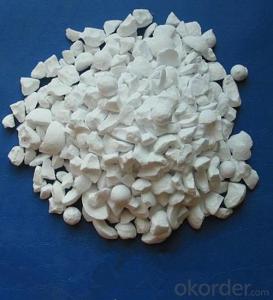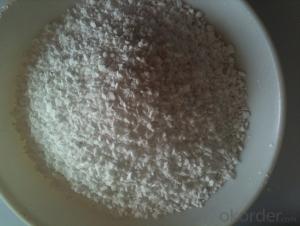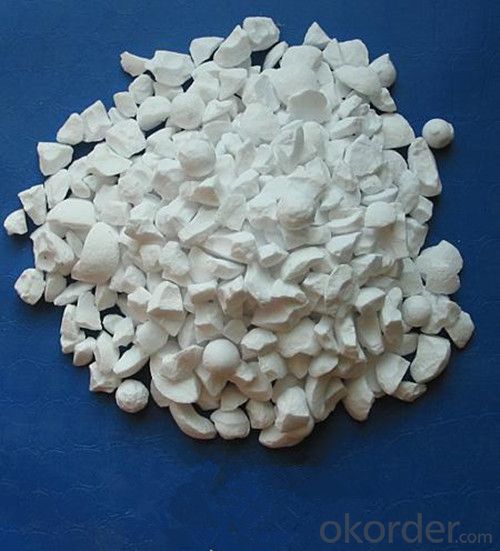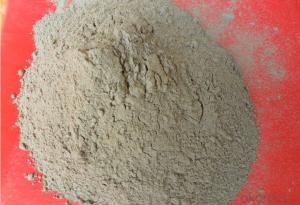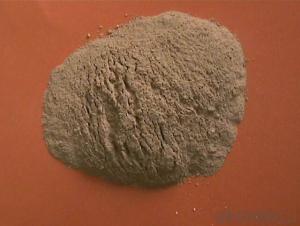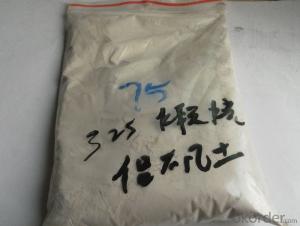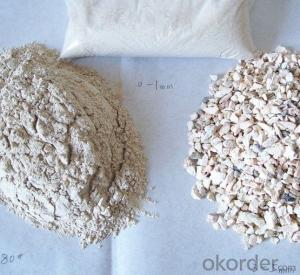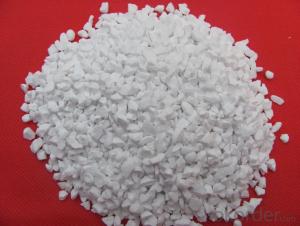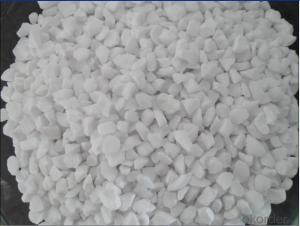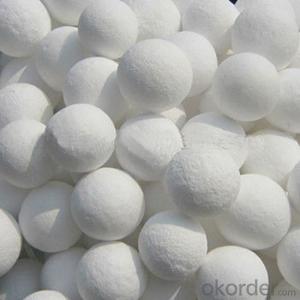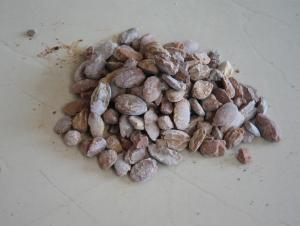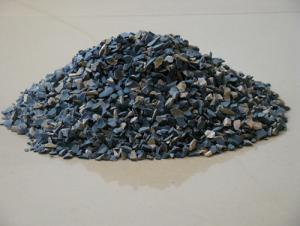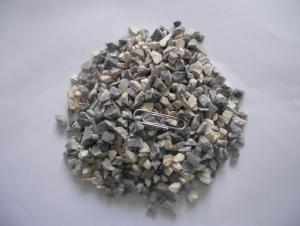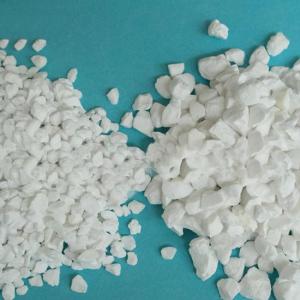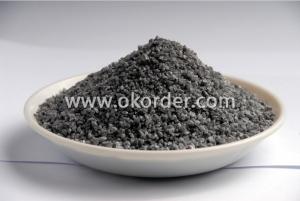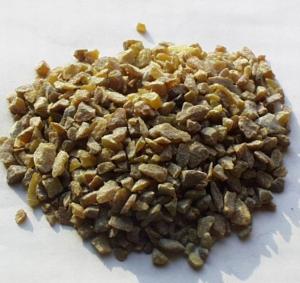Raw Materials for Refractory:High-Quality Tabular Alumina - Good Price, Delivery Time
- Loading Port:
- China main port
- Payment Terms:
- TT or LC
- Min Order Qty:
- 30 m.t.
- Supply Capability:
- 1000 m.t./month
OKorder Service Pledge
OKorder Financial Service
You Might Also Like
Specifications:
white tabular alumina
1.Al2O3>99.2%
2.Past ISO9001-2008
Description:Tabular Alumina is a pure sintered α-alumina materials that has been fully densified by rapid-sintering without the use of sintering aids at temperature in excess 1900°C.
Tabular Alumina has characteristic large, well developed hexagonal tablet shapedα-alumina crystals of up to 200µm length. applications include its use in electrical insulators, kiln furniture and as a catalyst support.
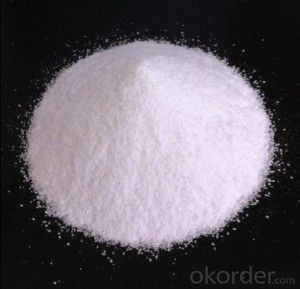
High refractoriness
Excellent thermomechanical properties
High volume stability
High density, low permeability
High thermal shock resistance
High chemical resistance
High purity
High mechanical stability
High wear-resistance
Series
Sizes, mm (mesh)
Benefit
Coarses
0-0.5mm
0-1mm ,
0-3mm0.2-0.6mm
0.5-1mm
1-2mm
1-3mm
2-5mm
3-6mm
Adds thermal shock and corrosion resistance to refractory products
Fines
0-325
Optimizes the particle size distribution and refractoriness of the refractory matrix
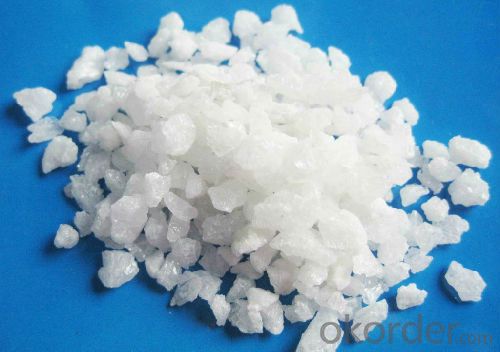
If you’ve kind enquiries, please don’t hesitate to let us know. ^_^
- Q: what's the varieties of fire-proof?sealing?material?
- Fire blocking material currently on the market include: fire stopping board, foam blocking material, flame resisting module, fire-resisting sealant, flexible organic caulking, WXY-II and fire retardant bag, etc. fire-proof?sealing?material is widely used in building construction and can ensure high-temperature flame and smoke from fires not spread to another fire?compartment, different buildings generally use different sealing methods. Pipeline is generaly sealed by pouring concrete board or mortar.
- Q: The classification of fire-resistant material
- Refractory material cna be divided into common and special fire proofing material. Common fire proofing material can be sub-divided in to acid fire proofing material, neutral fire proofing material. and alkaline fire proofing material according to chemical properties. Special fire proofing material can be divided into high temperature oxide refractory, refractory compounds and high temperature composite materials according to the composition. In addition, it also can be divided into common refractory products (1580 ~ 1770 ℃), high-grade refractory products (1770 ~ 1770 ℃) and super refractory products (above 2000 ℃) according to the strength . According to the shape, it can be divided into block (standard brick, special-shaped brick, etc.), special shape (crucible, sagger, pipe, etc.), fibrous (aluminum silicate, zirconia and boron carbide, etc.) and irregular shape (refractory clay, refractory castable, ramming material and so on). According to sintering process, it can be divided into sintered product, fused cast product and melting jetting product.
- Q: what kind of fireproof materials is used for high rise buildings?
- steel is recommended As a form of high-rise building structure, steel is widely used especially in the ultra-high-rise and long span construction showing strong vitality, for its high strength, light weight, and good extensibility, resistance to shock and short construction period. The mechanical strength of steel decreases with rising temperature at about 5000 ℃, decreasing about 40%-50%. the mechanical properties of steel, such as yield points, compressive strength, elastic modulus, and load capabilities have declined rapidly , quickly losing their ability to support, leading to building collapse. Therefore, it is imperative to protect steel structures. Brushing or spraying the coating on the surface of steel structure to prevent burning and insulate heat. It also prevents undermining the rolled steel from rapid temperature elevation and avoid collapse of building for lose of supporting capacities.
- Q: What things and cement mixed can act as refractory?
- Cement acts as cementing material. Itself works by refractory aggregate and stir the refractory material for its gelling refractory aggregate both should be fire-resistant.
- Q: How is the fire endurance of the fireproof paint?
- fire endurance of fireproof paint is from 1 to 4 hours. Mechanism: Fireproof paint itself is flame-retardant or non-combustible, protecting the substrate from direct contact with the air,delaying the time for catching fire and reducing the burning speed. fireproof paint decomposes with heat and releases non-combustible inert gas, thining out the flammable gas produced by the protected object, making it difficult to burn or slow down the burning. expansive fireproof paint expands under heat and forms a layer of carbon foam insulation to cover the protected object, delay the heat transfer in the substrate , prevent burning and possible losing of fireproof abilitiy because rising temperature.
- Q: How should fireproof building materials be ranked?
- According to our national standard GB8624-97, the combustion performance of building materials are divided into the following levels: A class: Incombustible building materials: the material is almost incombustible. B1 class: Flame-retardant building materials: they are better in fire retardation. It is non-combustible when meeting open fire in the air or under high temperature, and it is difficult for the fire to spread quickly. Besides, when the fire source is removed, combustion stops immediately. B2 class: Combustible building material: It has certain fire retardation. In case of open fire in the air or at high temperature, it will immediately burst into flames, and easily lead to the spread of fire, such as the spread to wooden pillars, timber roof truss, timber beams, wood stairs, etc. B3 class: Flammable building material: It has no fire retardant effect at all, but is highly flammable with high fire risk. Hope my answer can be accepted.
- Q: What are first rate fire resistant window materials?
- Natural environmental protection, non-poisoned, non-peculiar smell, non-radioactive; non-combustible, fireproofing, moisture-proof, corrosion-resistant; easy construction, lightweight, high strength, www. jsxsmy.
- Q: How is the development of Xinmi refractories industry? What's its advantages and disadvantages?
- The advantages are largest scale, top production amout in the country, accounting for one-third of the national market, having technology, strength and the market. The disadvantages are the lack of mineral resources, serious environmental pollution,
- Q: Who knows the fire endurance of rock wool color plate?
- I'm glad to answer your question and offer you some of my experiences, for reference only. In fire?safety?rules, it can be divided into non-combustible component, hard-combustible component, combustible component according to the combustible degree of building materials. Rock wool board is building board recombinated artificially by fibers processed by coated steels and inorganic minerals like basalt mineral, because steel plate and rock wool which is the main components are non-combustible material, so rock wool board should be considered as non-combustible component. The fire endurance of rock wool board has its own judging criteria. Lose sustaining power, integrity and fire insulation function. Its fire endurance is within 2 hours.
- Q: How to divide the fire resistant level of construction thermal insulation materials?
- Combining three versions of GB8624 (1997,2006,2011), external wall thermal insulation fire?rating can be basically divided into: A1, A2, B1, B2, B3 and other levels. There are many technical indexes for specific division. And it is mainly determined in accordance with the national standard GB8624 Building materials combustion levels.
Send your message to us
Raw Materials for Refractory:High-Quality Tabular Alumina - Good Price, Delivery Time
- Loading Port:
- China main port
- Payment Terms:
- TT or LC
- Min Order Qty:
- 30 m.t.
- Supply Capability:
- 1000 m.t./month
OKorder Service Pledge
OKorder Financial Service
Similar products
Hot products
Hot Searches
Related keywords
